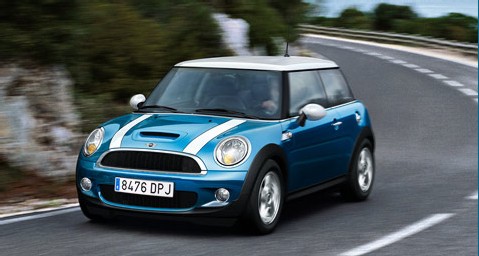
Mini Cooper S
“If there is one motoring truth, it is that nothing brings people together or makes people smile like the original Mini. It truly was a car for the masses as well as personalities. From celebrities of the sixties like Peter Sellers, Cliff Richard and the Beatles, to just plain old folk, the Mini was their chosen ride.”
The Mini is an icon and is destined to live on as one of the great legends of the motor industry!
The Mini was produced by British Motor Corporation (BMC) on 26 August 1959. BMC was formed in 1952 by the merger of the Austin and Morris companies. The Mini was originally launched in two Versions – the Austin Seven and the Morris Mini-Minor. The name Austin Seven (sometimes written as SE7EN in early publicity material) recalled the popular small Austin of the 1920s and 1930s. The other name used in the United Kingdom, Morris Mini-Minor, seems to have been a play on words. The Morris Minor was a well known and successful car, with the word minor being Latin for “smaller”; so an abbreviation of the Latin word for “smallest” — minimus — was used for the new even smaller car.
The introduction of the Mini was partly inspired by the Suez crisis in 1959 which for a brief period brought gasoline rationing back to Britain. The BMC’s head honcho, Leonard Lord, decided that BMC really needed a new small car. He asked Sir Alex Issigonis, already a prolific designer, to design one; the only proviso being that it must use the existing A-series engine in order to save cost.
Sir Alex Issigonis’s vision was to design the smallest possible car that would accommodate four adults and some luggage. After deciding the basic dimensions, Sir Alex Issigonis’s issue was to fit the engine into the car. Before Issigonis left Morris Motors in 1952, he had successfully built a special Morris Minor with front-wheel drive and a transverse engine. Sir Alex Issigonis thence applied these engineering innovations to the Mini. With that, he had solved the issue of saving engine’s space whilst maximizing cabin room.
The new Mini was then produced and offered for sale for just around ₤500. Mini took some time to build its popularity. The initial production in 1959 was only 20,000. However, 3 years later, the sale managed to achieve 200,000 per year and the figure would be maintained and even surpassed over the next 15 years.
There were many versions of the Mini;1960 to 1964 saw the first Minis coming in estate car and van versions, then a pick-up, and in 1961 the badge-engineered luxury versions of the Mini under the Wolseley Hornet and Riley Elf badges. Mini was developed and upgraded from time to time in terms of engine, design, speed, etc. The Mini Cooper had also been used in rallying by BMC’s completions department. Mini Cooper S won the prestigious Monte Carlo Rally three times from 1964 to 1967!
In 2001, The New Mini was born. The New Mini today has sold over 875,000 units in around 70 countries and is already approaching its maker’s 240,000 annual sales target. The father of the Mini, Sir Alex Issigonis, who died in 1988, would be proud of his achievement. Had he been around, the 101- year-old great man would see how the agile four-seater he had created has grown beyond all expectations!
Many people may not be fascinated with British cars especially the engine. However, these people probably didn’t count on German precision engineering to make this car outperform the rest. For Mini owners, MINI is not just a mere appliance. It’s cool, cute and delivers on ballsy go-kurt fun.
The second take of the modern MINI was introduced to the international media in Barcelona three months ago. A fleet of blue and red Cooper S at the city’s Olympic Channel set the stage for the press to get acquainted with the latest revision of an icon. The reds wore 17-inch wheels on sports suspension while the blues were on 16-inchers with standard suspension.
Many changes have also been seen in the latest generation of the Mini. The exterior changes make the car look more refined and beefy. Every panel has been replaced and the car is 60mm longer than before. The boffins have also tinkered with the transmission, suspension, brake systems and the engine. The new hexagon radiator grille is now a one-piece set and direction indictor lights are integrated into the headlights. The Mini also has a higher hood line to conform to pedestrian safety standards. Distinct shoulders in the rear counterbalance the longer front end. The wedge design is accentuated with a window line that rises ever so slightly towards the back, and a styling that gives the illusion of an uninterrupted flow of windows around the car. This new Mini also gives slightly more room for four people now and the interior quality has been improved.
The engine for the new MINI is the biggest change and improvement! The New Mini no longer uses Chrysler. The 1.6-litre mill is the result of a cost sharing venture between BMW and Peugeot. The engine is more powerful and fuel-efficient. The Cooper S can produce 175bhp while the Cooper offers up to 120bhp. Six-speed manuals are standard gearboxes in both Cooper models though both can be equipped with a six-speed auto as an option. More on Cooper’s features can be read from Mini.
BMW Press: The Mini truly is a car for all time and what more proof do you need than the number of classic Minis that are kept spotless and gleaming while running rings around their more modern counterparts, all the while bringing smiles to the faces of their drivers and on-lookers alike?
Visit the portal that leads to official Mini sites throughout the world.
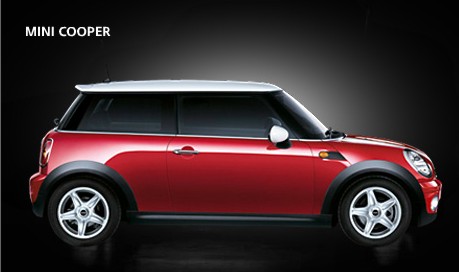
Mini Cooper
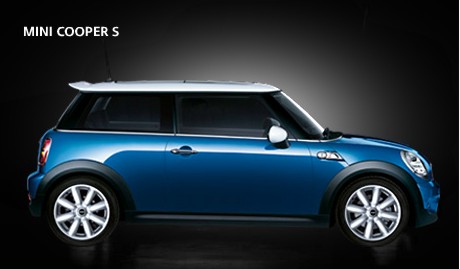
Mini Cooper S
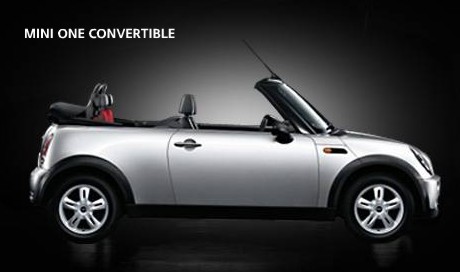
Mini One Convertible
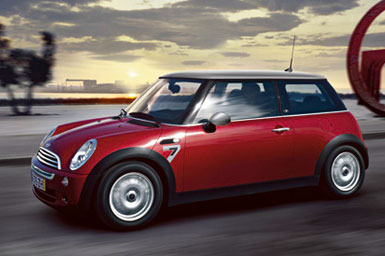
Mini One Seven
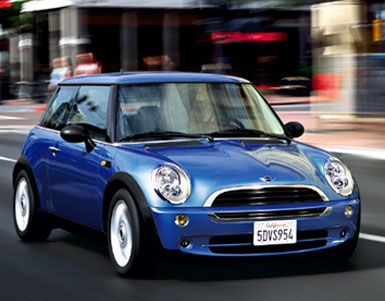
Modern Coopers in a sequence from the remake of the movie “The Italian Job” chase scenes stretched across rivers, narrow streets and even on rooftops.
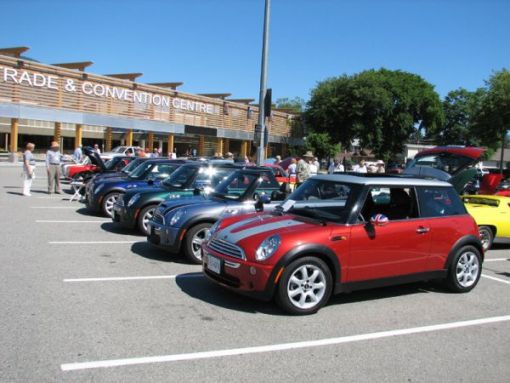
Mini-Cooper had great rallying success. It also won the prestigious Monte Carlo Rally three times.